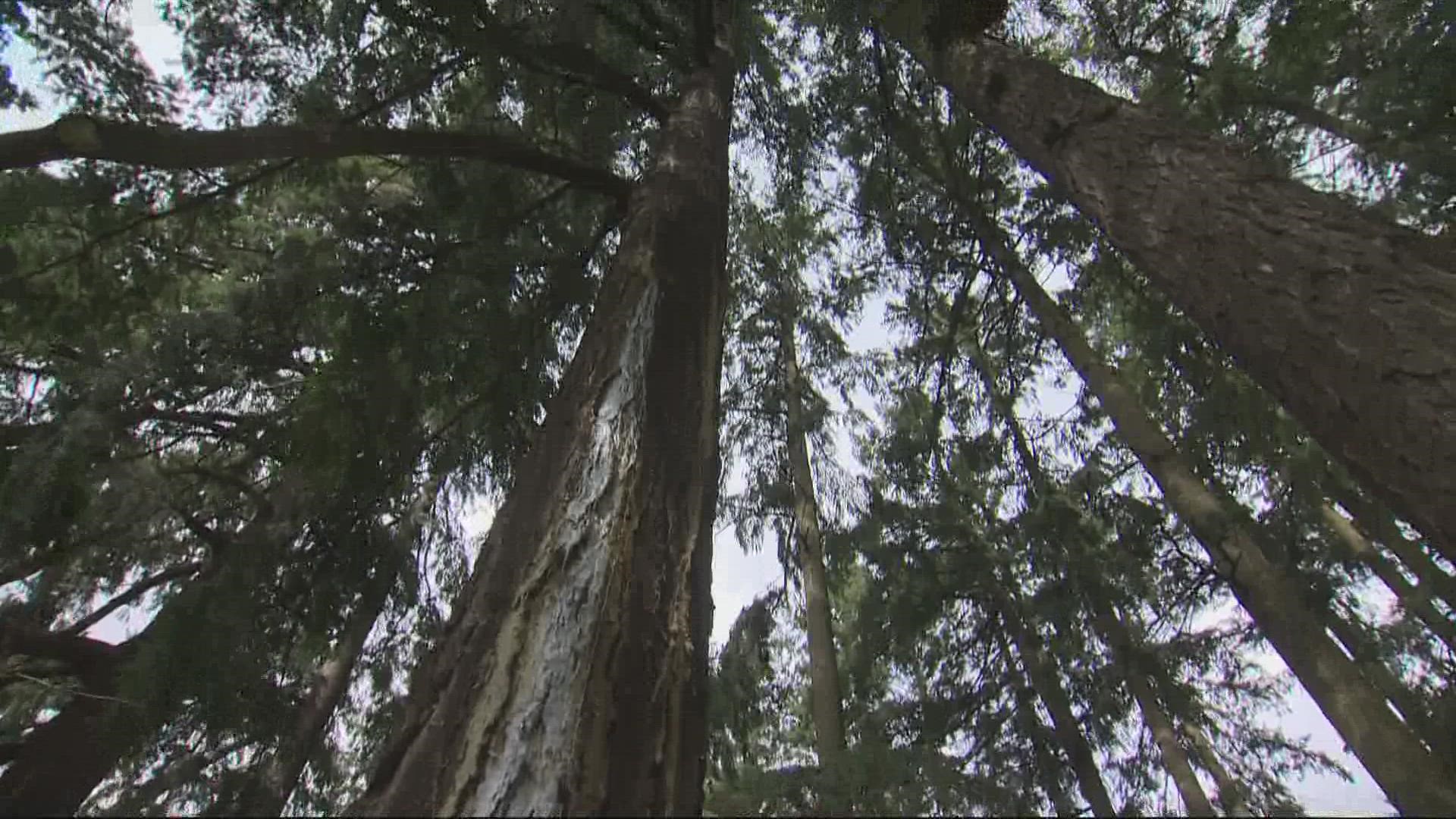PORTLAND, Ore. — It's undeniable that Portland loves its trees. It protects species diversity with a list of which trees can and cannot be planted.
The city keeps track of its urban forest canopy and has counted its trees every five years since 2000. The most recent count in 2020 found, for the first time since those studies began, the number of trees in Portland has fallen.
The report found that tree canopy in the Portland area dropped from 30.7% in 2015 to 29.8% in 2020. The city's Climate Action Plan set a goal of having urban forest canopy over one-third of the city's area.
"We're estimating that we lost 800 acres of canopy, a little bit more than that, which, over five years, that's losing the equivalent of Mount Tabor Park — that sized chunk of tree canopy — every year for five years," said Jeff Ramsey, a science and policy specialist with Portland Parks and Recreation.
Vivek Shandas, a professor and scientist at Portland State University who studies climate and urban ecosystems, said a 2014 study of the greater Portland area counted more than 13 million trees that were at least 50 feet tall.
"That number is pretty large, so we're not really talking about too much difference in that number from 2014 to 2022," Shandas said.
Overall, it's not a stunning drop. Portland has still seen a large overall increase in tree canopy since 2000. Shandas said what is worrisome is that Portland's east side saw a bigger loss of tree canopy.
"That's a pattern that's actually a bit concerning, in part because those are the areas of Portland that are the hottest parts of town, including the neighborhood of Lents," Shandas said.
More trees means more shade, and more shade means more cooling on hot summer days. Shandas demonstrated that point during the 2021 heat dome when he mapped the temperatures in different parts of Portland.
In Lents, he measured the temperature at 125 degrees while Northwest Portland clocked a temperature of 99.
RELATED: Experts detail Oregon forest damage in aftermath of June heat dome; long term effects unknown
The largest tree canopy loss was in residential zoned areas, which make up the largest portion of the city and contain the majority of the city's trees, according to the report. Residential areas lost a total of 523 acres of trees over five years.
Shandas said the biggest reason for the loss is development of new housing or remodeling. Trees are being taken out and not replaced fast enough, and that has an impact on everyone, he said.
"We know that places that have a lot of trees tend to have a variety of improved health outcomes. People generally have lower rates of asthma, people generally have much better mental health in areas that have a verdant tree canopy."
City leaders said the report shows action is needed to replace the trees the city is losing.
“This important, thorough scientific study is a wake-up call for us,” said Parks Commissioner Carmen Rubio in a statement. “Trees strengthen our resilience to climate change, but they are also vulnerable to climate-change-fueled weather. We need to take concrete actions to replace the trees we’re losing and create an equitable tree canopy that will bolster our resilience to climate change."
Read the report:

